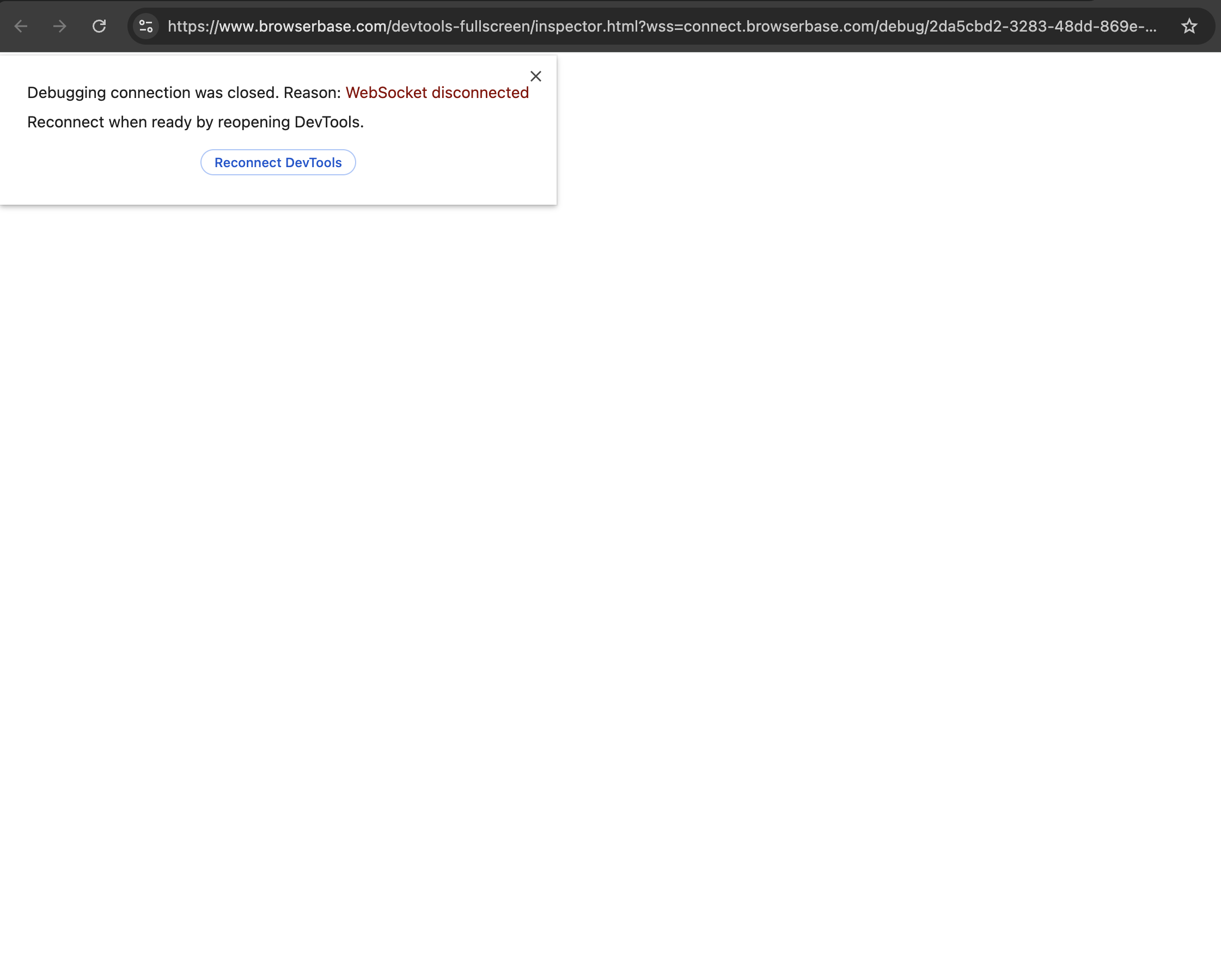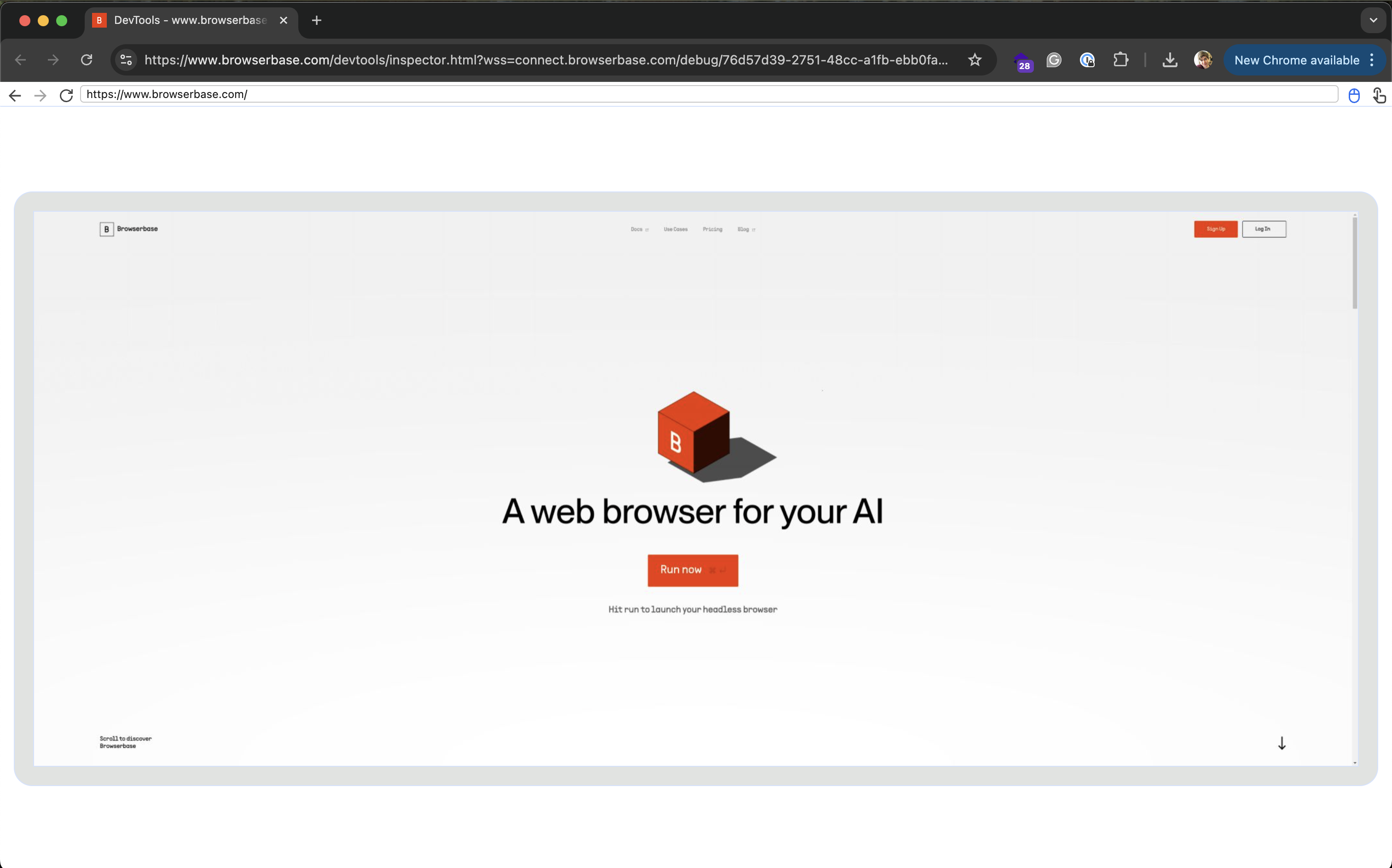Uses
While Browserbase helps with anti-bot mechanisms, scraping, and reliable file downloads among other features, some scenarios remain challenging to fully automate for technical or data-privacy reasons. Live Views can be useful for:- Debugging and observability - watch everything happening live, or share with users or coworkers
- Human in the loop - instantly take control or provide input
- handle iframes - loaded content might be external or could change without notice, potentially leading to error conditions without human intervention
- delegate credentials - give control to the end user
- Embedding - use within an application (both desktop and mobile)
Getting Started
Need help getting started? Check out our Create a Browser Session and Using Browser Sessions guides.
Disconnect Message
When the browser session ends, the live view will show this message:
Multitab
Each tab has a unique live view url. Thepages property contains all live view urls.
We recommend listening to the Playwright new tab event (or equivalent in other libraries) to trigger a request to get new live view urls when needed.
Embed
In the frontend of your application, add the live view link to an iframe to embed it.Mobile
Show a mobile live view by setting a session’s viewport and fingerprint parameters. For a complete list of supported viewports, see here.Mobile keyboards are not officially supported.
Styling
Browser with Borders
Mimic a real browser with borders.
Hide the Navbar
The live view includes a navbar at the top, for additional context and navigation control. To maximize the visible area, or for integrating with a UI that already provides context, you can hide the navbar.Hide the Scrollbar
- JavaScript
- Python
Common Errors & Issues
- Blank or Empty Window We may be on another tab. Check if there are multiple tabs open either via the web session inspector or the pages list.
- Lag Check out our performance guide.
-
Looks Off
Often bugs from a rendering headless browser - some bugs may be amenable to directly adjusting css styling, for example through
page.evaluate(). - Lost Connection If the live view loses its connection to the browser, the iframe will post a message to the window warning you of the new state.
JavaScript